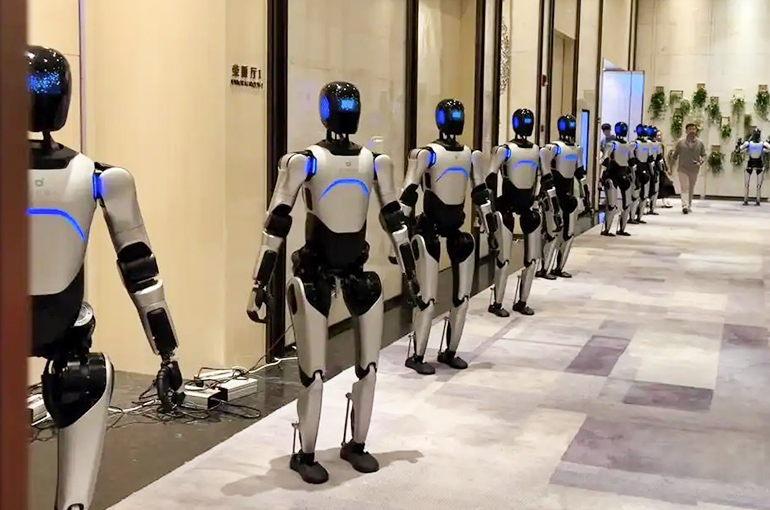 China’s Robotics Sector Logs USD337 Mln in M&As in Third Quarter, But Experts Say Boom Is Still Far Off
China’s Robotics Sector Logs USD337 Mln in M&As in Third Quarter, But Experts Say Boom Is Still Far Off(Yicai) Sept. 24 -- China’s robotics sector saw a surge of merger and acquisition activity in the third quarter, attracting CNY2.4 billion (USD337 million) in investments. However, industry insiders believe that it is still too early to call this the start of a full-blown M&A wave.
The biggest deal was robot maker AgiBot’s takeover of Swancor Advanced Materials for CNY2.1 billion (USD295 million). Yesterday, the high-performance materials producer said that the share transfer had been completed, making Deng Taihua, the founder, chairman and chief executive officer of AgiBot, its actual controller. AgiBot first said in July that it would buy a 29.99 percent stake in Shanghai-based Swancor through a two-step process of a "share transfer agreement" and a "voluntary tender offer."
The other deals were by investment firm Kunwu Jiuding Investment Holdings Co., LTD, which bought a 53.2 percent stake in robotic components company Nanjing Bio-inspired Intelligent Technology for CNY213 million (USD29.9 million). With an annual revenue of just CNY2.09 million (USD293,465), the purchase price was 29 times its yearly sales.
Mobile internet company Cheetah Mobile also acquired a 60.8 percent stake in UFactory, a maker of robotic arms, for nearly CNY100 million (USD.
Strategic Moves
AgiBot’s move is not just about gaining control, Teddy Zheng from CEC Capital Group told Yicai. The Shanghai-based company has ample cash flow on its balance sheet and it might be seeking to broaden its financing channels and build up an ecosystem. Over the past year, AgiBot has invested in 15 early-stage projects in areas such as robot manufacturing and component supply, many of which tie into its supply chain and technology needs.
The acquisition by Cheetah shows that it is optimistic about the prospects of the robotics industry, Zheng said. UFactory’s robotic arms are already being used in Beijing-based Cheetah’s coffee robots. Their earning potential and overseas prospects make the deal attractive. The move also aligns with the logic of many Chinese firms looking to shore up their industrial chains through M&As.
Kunwu Jiuding is betting on future cash flow, Zheng said. Although the upstream robotics parts market is still relatively small, barriers to entry are high. But once downstream demand kicks in, the sector could enter a boom period, which would make the deal hold strategic value.
Still Early Days
It is too soon to talk about large-scale M&As in the robotics industry, Zheng said. Commercialization has not yet taken off and even the leading humanoid robot companies are still experimenting.
M&As are not a shortcut, he said. Both initial public offerings and M&As are pathways to capitalization and the core goal is to help businesses reach the next stage. For M&As, technology breakthroughs and ecosystem synergies are key, and they both require time.
Robotics is an emerging industry that requires patient, long-term capital, Wang Wenhuai, chairman of C&D Emerging Industry Equity Investment, told Yicai. M&As are also a complex process and post-investment management and business integration are crucial. Whether M&As can actually fast-track growth depends on balancing financial gains with industrial synergy.
On the technology side, the robotics field still needs to achieve greater breakthroughs in technology iteration and scenario expansion, an engineer told Yicai. As humanoid robots have limited applications and can only perform relatively simple movements, other more mature force-feedback solutions can often do the job instead.
Editor: Kim Taylor